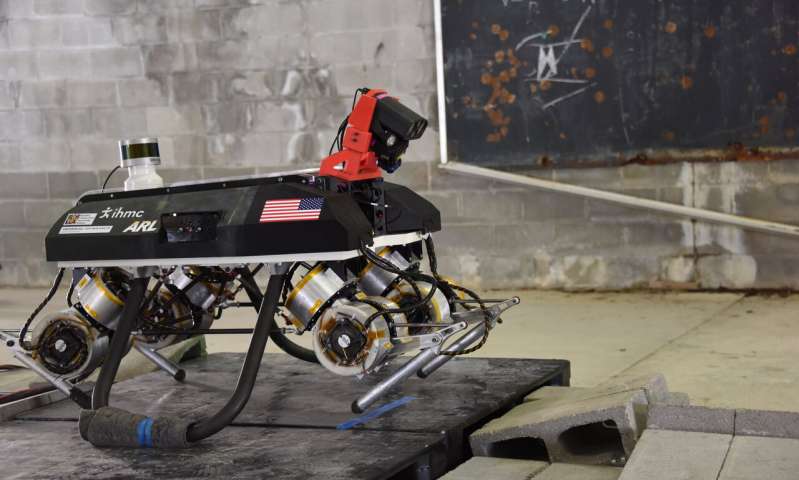
Imagine a small U.S. Special Forces team conducting covert operations in a hostile territory. The mission requires the team be limited in size, but able to carry extensive equipment, both explosive and inert, in order to execute the mission. What makes this team so unique? It consists of both Soldiers and robots as team members.
The unique team member amid the group is the Legged Locomotion and Movement Adaptation, or LLAMA, an autonomous quadruped mobility research platform system patterned after a working dog and similar animals. Researchers designed it to work in concert with Soldiers, lighten physical workloads, and increase mobility, protection and lethality.
The system is all electric and has high torque actuators and algorithms for advanced perception, intelligence and control for autonomy and teaming. The robot is designed for mobility in structured and unstructured environments—meaning it can go where dismounted Soldiers go—whether its rough terrain or climbing stairs.
The readiness of the platform is dependent on its mission. For instance, a logistics mission might be ready within the next five years or less, but a more complex mission requiring a higher level of autonomy that does not yet exist and will have a longer development time, officials said.
The U.S. Army Combat Capabilities Development Command’s Army Research Laboratory developed the robot as part of its Robotics Collaborative Technology Alliance, known as the RCTA. Researchers said it is the embodiment of the program’s research efforts in the area of advancements in autonomous off-road mobility and research to transition robots from tools to teammates for Soldiers.
The Army will showcase LLAMA at an Oct. 17 event at the National Robotics Engineering Center facility of Carnegie Mellon University in Pittsburgh.
Nearly 60 researchers and engineers from more than a dozen companies and universities collaborated on experiments with an ensemble of multifunctional autonomous systems during a large-scale experimentation event earlier this summer at Camp Lejeune, North Carolina. Based on findings from that event, researchers are looking to improve LLAMA’s mobility for the October event.
At the start of the RCTA, there were a few traditional wheeled/tracked robotic research platforms available, explained ARL engineer Jason Pusey; however, Pusey these platforms lacked the ability to follow a Soldier in a mission indoors and outdoors. The state of the art in sensing, computing, power supply and actuation has advanced to a level that makes advanced legged locomotion platforms now possible, at least a viable research tool.
Progress in machine learning has, over time, shown promise to design robust perception systems for mobile robots that are capable of navigating among moving pedestrians with agility, while maintaining awareness of the presence of particular elements in the environment, Pusey said.
“Right now, the LLAMA has three degrees of freedom per leg,” he said. “We did three degrees of freedom per leg so we can obtain a sizeable workspace enabling the platform to be agile enough to conquer reasonable complex terrain.”
Pusey has been involved in the RCTA since its inception in 2009.
“The platform not only has the mobility capabilities, it also includes perception and intelligence,” he said. “That platform was trying to culminate a lot of different technologies within the RCTA to integrate them together into one platform that we can actually show to immolate the far-reaching goals of combining all of this into one unique intelligent platform for the Soldier.”
Through design and research, the collaborative team is now exploring ways to emulate the movements of greyhounds, cheetahs and similar animals to see how they use their spines to propel themselves forward.
Army-led foundational research, as seen in the RCTA, has resulted in advanced science in four critical areas of ground combat robotics that effect the way U.S. warfighters see, think, move and team, researchers said.
“There was no robust model for autonomy in the Army or in general applications prior to the RCTA,” said Dr. Stuart Young, collaborative research agreement. “Through this research program we’re speeding Soldiers’ abilities to access information needed to complete missions.”



